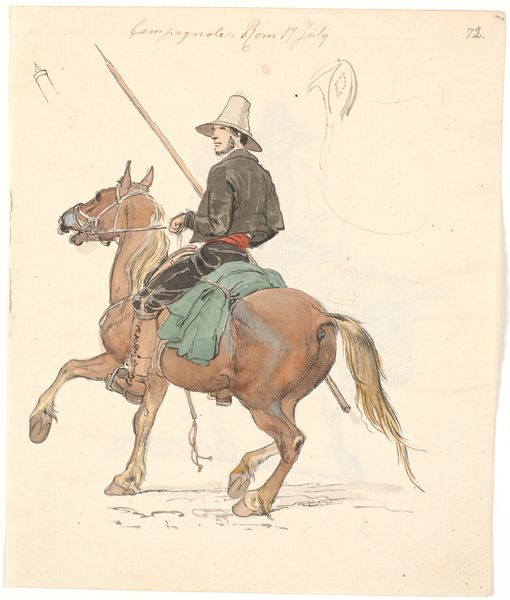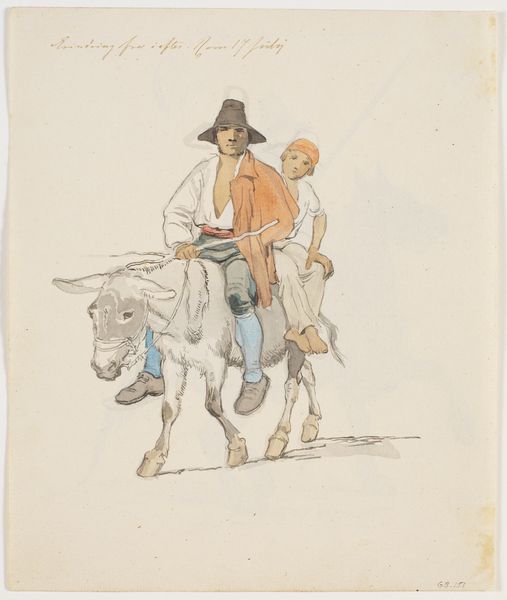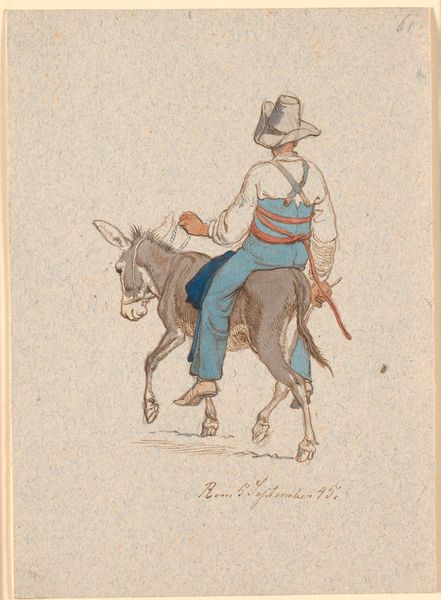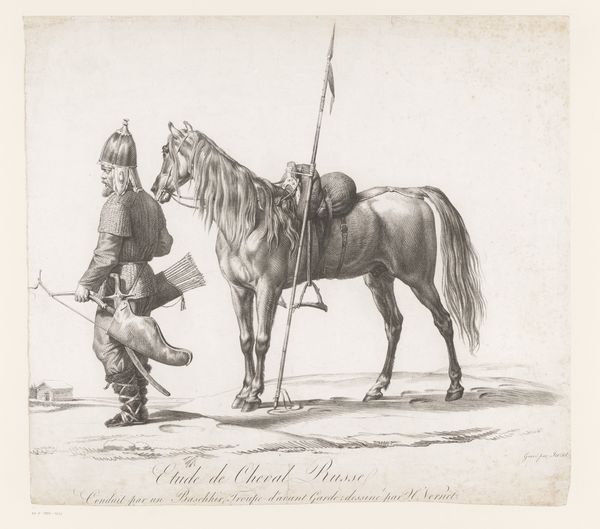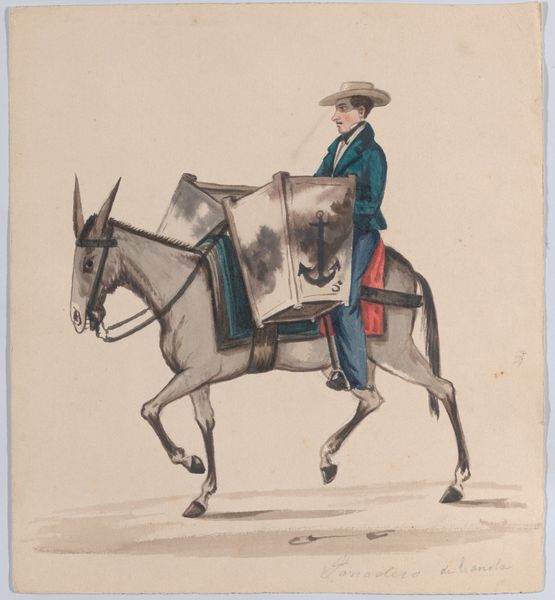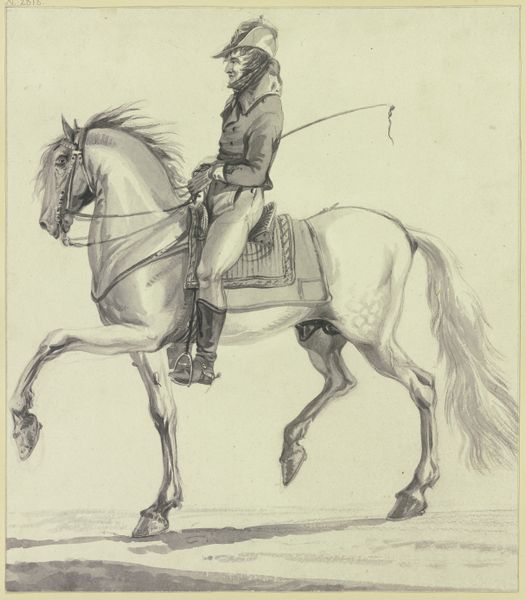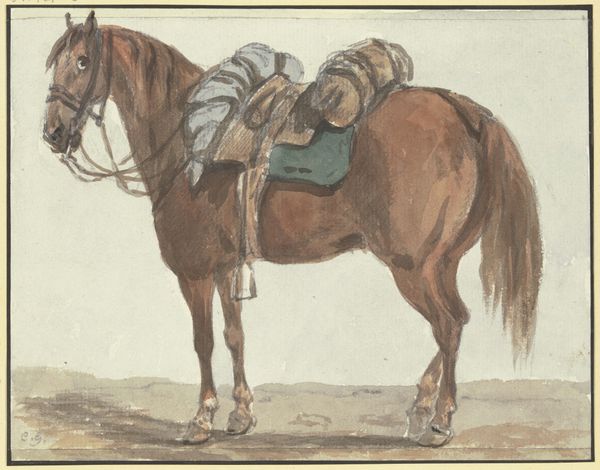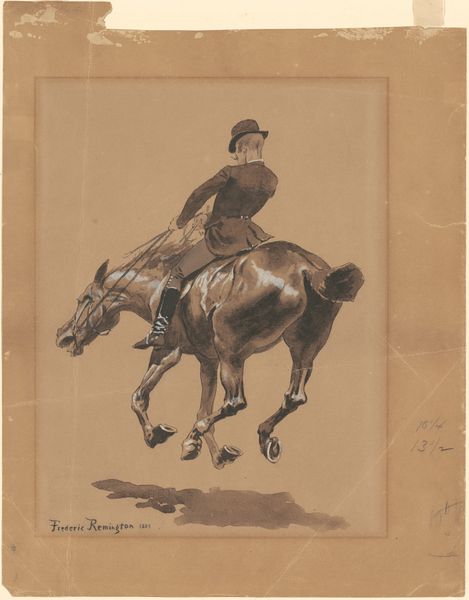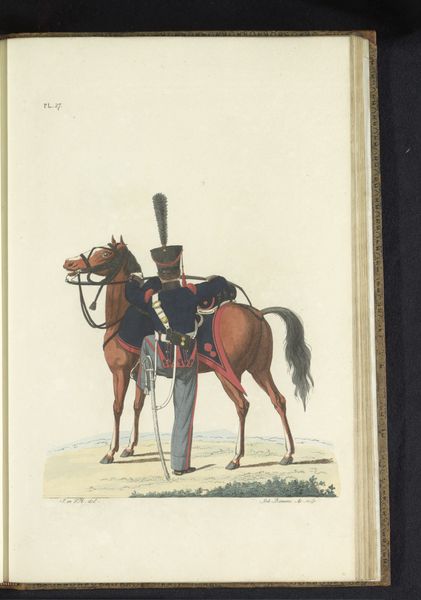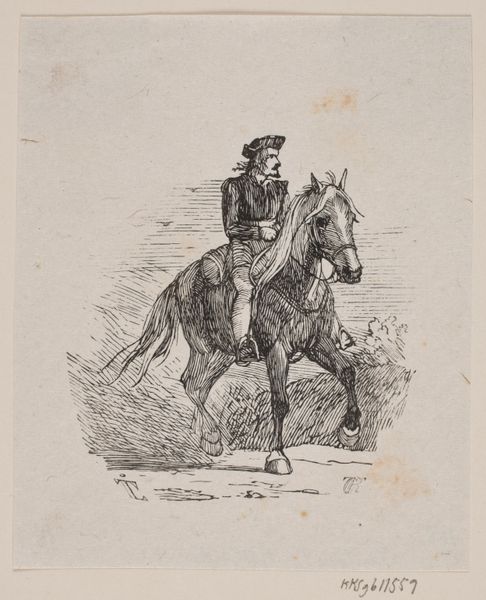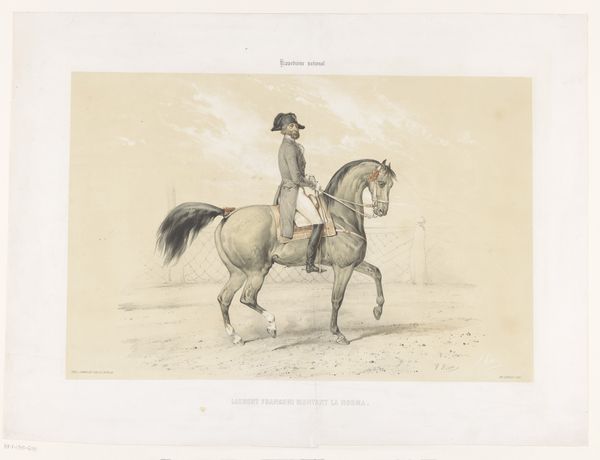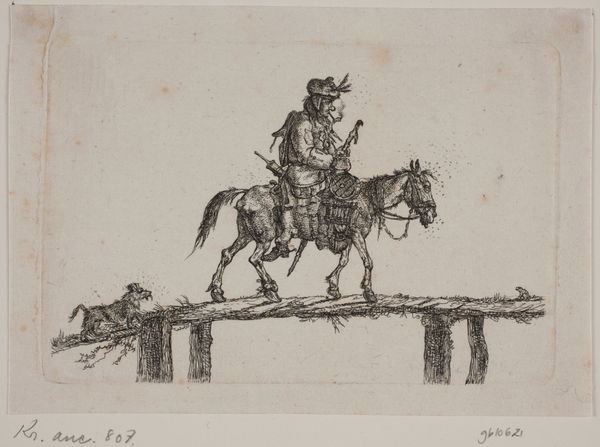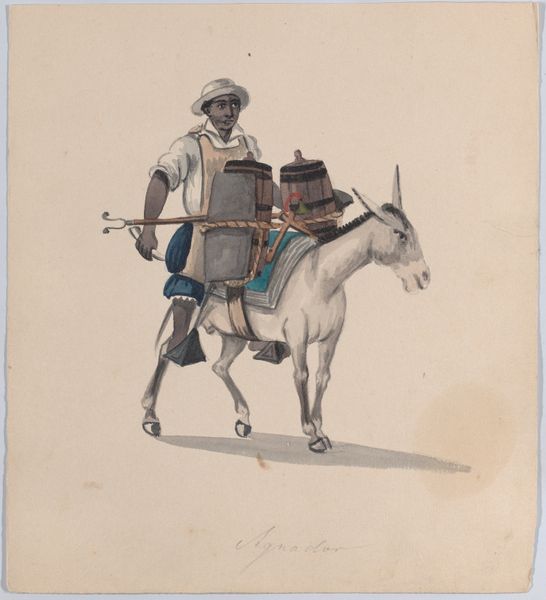
drawing, watercolor
#
drawing
#
landscape
#
figuration
#
watercolor
#
romanticism
#
genre-painting
Dimensions: 204 mm (height) x 272 mm (width) (bladmaal)
Curator: This drawing is "Ridende campagnol," or "Riding Farmhand," created in 1845 by Johan Thomas Lundbye. It’s made with watercolor and drawing. I’m struck by the tranquility of it – it’s a quiet scene, despite depicting a figure on horseback. How do you interpret it? Editor: It's beautifully rendered, and that tranquility is there. What catches my eye, though, is the spear-like object the man carries. It seems at odds with the bucolic image, maybe even hinting at something beyond a simple genre scene? What sort of historical or cultural symbolism might be at play here? Curator: The "spear," as you call it, is intriguing, isn't it? In this era, especially within Romanticism, we often see nature idealized, but there's also an awareness of the potential harshness of rural life and that’s often revealed in symbology. This is in contrast with urban scenes. What does the weapon-like staff say about the human need for safety and assertion within a landscape they also depend upon? Editor: That's a powerful connection to the psychological weight behind it, a sense of preparedness amidst an idyllic setting. Curator: Exactly. The image plays with this dual narrative. It's beautiful, but not without this silent vigilance. Editor: This reading changes everything, offering a new understanding of 19th-century landscape and genre art. I will now see many levels in similar pieces! Curator: Indeed, it reveals cultural memories—notions of survival, authority, and even the picturesque coexisting. Hopefully this gives visitors new pathways to interpreting art from that time!
Comments
No comments
Be the first to comment and join the conversation on the ultimate creative platform.
